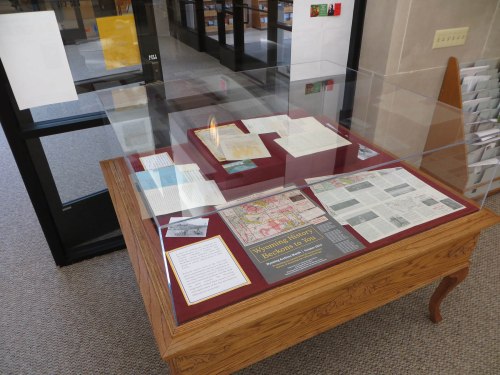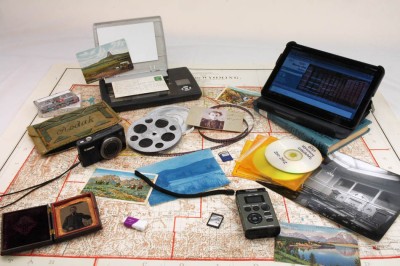In this day and age, many museums and archives are struggling to show the impact of their collections on life today. Most people see the value of keeping historical records to learn about the past, but it can sometimes be a struggle to see how those curiosities affect your day to day life.
The Wyoming State Archives is no stranger to this conundrum ourselves. We can easily point to portions of our collection with real, tangible impacts on the lives of Wyoming citizens but, unfortunately, these same documents are usually not the delightfully captivating historical oddities that make for great blog posts and PR campaigns. And since access to many of them is restricted, it can be hard to engagingly illustrate their existence. So we turn to words. Which can be boring. And easy for folks to skip over in favor of the colorful pictures of the cool historical stuff archives are better known for. <sigh>

Did you skip the first paragraphs to look at this photo? You aren’t alone.
(WSA P2011-4/1, Devils Tower with visitors, 1930, hand colored)
But they do exist and they do make a big impact of the lives of average citizens.
Take, for instance, the retiree who is filing for Social Security or a military benefits They may need a copy of their Decree of Divorce to prove their eligibility. In many cases, these district court case files have been transferred to us for safe keeping.
Or how about the person who is attempting to correct a mistake on their birth certificate or to obtain one for the first time. School district census records and newspaper birth announcements in our collection are invaluable to these citizens in proving their name, date and place of birth to the Vital Statistics office.

Court case files and school district census records are less interesting to look at than historical material, but they can have a profound impact on the life of Wyoming citizens.
Proof of high school graduation has become a standard request for many employers looking to verify the credentials of potential employees as well as for non-traditional students going to college for the first time. Since the majority of Wyoming high schools transfer their inactive student records to us, there is a good chance that these folks will need to talk to us.
Oil and gas leases are big business and new oil and gas discoveries in the last few years have increased the number of researchers looking into land titles and mineral rights. Thanks to a microfilming project in the 1960s, we have copies of all 23 county clerks’ land records up to the mid-1960s available here in the reading room, lessening the wear and tear on both the original documents and the clerks’ staffs. Several clerks have also transferred their original record books to us, too. And then there are the district court probate files that record the distribution of these properties through estates to heirs. Without a clear chain of title, drilling may be delayed or even abandoned and royalty checks would not make it to their rightful recipients.
Our records also assist:
– Driver’s license/Real ID documentation
– FBI-NICS handgun background checks
– National criminal database updates
– Professional board background checks
– Proof of citizenship
– Real estate title work
– Restoration of rights
– Road right of ways and easements
– Water rights litigation
– Worker’s comp documentation/review
And the list goes on.
By statue, open public records must be available to citizens who request to view these documents, but the process can be come a logistical nightmare for staff in small offices with less than ideal storage situations. At a time when budgets are being stretched to their limits, few agencies and counties have the money for additional staff to manage and accessing inactive records or to build courthouse additions to store those same inactive records. But they don’t always need to. Instead, they can often utilize our staff and storage space, freeing themselves to focus on new record creation. This increased efficiency leads to a monetary saving to taxpayers who are not asked to approve additional funding for capitol construction projects or hiring additional staff.

Laramie County Treasurer’s Office vault in the 1970s before many of the books were transferred to the Archives.
(WSA Sub Neg 9262a)
Thank you for taking the time this October to go behind the scenes with us and explore the work we do here at the Archives to keep Wyoming’s documentary heritage available for future researchers. We love what we do and are passionate about archives and records management. As always, we invite you to visit the Archives on your next trip to Cheyenne or contact us with any questions.



















